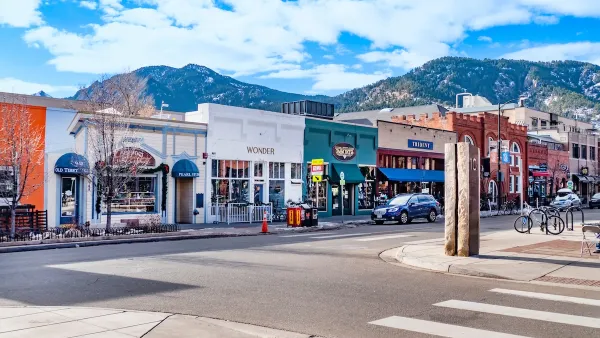New research out of the University of Connecticut shows that making room for parking in cities only leads to more cars, and less people and economic development.
Building on research from the University of Pennsylvania that validated the idea that more space for cars in dense cities translates to less space for people, Chris McCahill and Norman Garrick "found that cities with higher rates of driving have fewer people – a difference of more than 4,000 people per square mile for each 10 percent change in automobile use," in work published recently in Urban Design International.
The authors look at the histories of six cities that bolstered their parking beginning in the 1960s to "support economic development and help their cities compete with the surrounding suburbs."
"If the function of parking in these places was to enable growth and development, the data suggests they were abysmal failures," note the authors. "The number of people and jobs dropped by as much as 15 percent and the median family incomes fell by 20 to 30 percent in some places. Today, these places still struggle to compete in their regions."
However, in the three cities that changed course in the 1980s to limit the provision of parking, the authors found a different outcome. "Even as they cut back on surface parking, the number of people and jobs climbed upward, as did incomes. Less parking in these places has meant the urban fabric can be stitched back together and there is more space for shops, restaurants, jobs and other things that make cities great."
FULL STORY: Cars and Robust Cities Are Fundamentally Incompatible

Planetizen Federal Action Tracker
A weekly monitor of how Trump’s orders and actions are impacting planners and planning in America.

Maui's Vacation Rental Debate Turns Ugly
Verbal attacks, misinformation campaigns and fistfights plague a high-stakes debate to convert thousands of vacation rentals into long-term housing.

Restaurant Patios Were a Pandemic Win — Why Were They so Hard to Keep?
Social distancing requirements and changes in travel patterns prompted cities to pilot new uses for street and sidewalk space. Then it got complicated.

In California Battle of Housing vs. Environment, Housing Just Won
A new state law significantly limits the power of CEQA, an environmental review law that served as a powerful tool for blocking new development.

Boulder Eliminates Parking Minimums Citywide
Officials estimate the cost of building a single underground parking space at up to $100,000.

Orange County, Florida Adopts Largest US “Sprawl Repair” Code
The ‘Orange Code’ seeks to rectify decades of sprawl-inducing, car-oriented development.
Urban Design for Planners 1: Software Tools
This six-course series explores essential urban design concepts using open source software and equips planners with the tools they need to participate fully in the urban design process.
Planning for Universal Design
Learn the tools for implementing Universal Design in planning regulations.
Heyer Gruel & Associates PA
JM Goldson LLC
Custer County Colorado
City of Camden Redevelopment Agency
City of Astoria
Transportation Research & Education Center (TREC) at Portland State University
Jefferson Parish Government
Camden Redevelopment Agency
City of Claremont





























